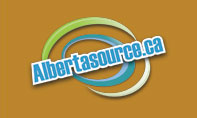 Heritage Community Foundation Presents
Heritage Community Foundation PresentsAlberta Online Encyclopedia
Schooling
For Francophones living in Alberta, education and language rights are closely linked. Schooling for Franco-Albertans began in the 1850s with the establishment of the first Roman Catholic Church missions. Formal education was seen as a tool for "civilizing" the local Aboriginal People, and religious instruction was an integral part of the conversion process. Instruction was provided in both English and French, and in 1885 a Board of Education featuring a Catholic compontent was formed. However, as English dominance and a belief in assimilation grew, there was an increasing hostility towards education in the French language at the end of the nineteenth century. In 1892, the Canadian government made English compulsory in schools, and in 1901 limited the use of French to one hour per day.

In 1905, Alberta became a province, but no mention was made of the language rights of the region's French populations. Instead, Francophones were treated like any other minority in the province and, by law instruction was limited to the English language. The role that French were able to play in their children's education was further limited when small community school boards were consolidated with larger Anglophone school boards into districts. Little would change until 1952 when the Alberta School Act permitted the use of French as a language of instruction in grade one. In 1964, this was amended to allow French instruction from grades one to three.
During the 1970s, many Franco-Albertans warned against the potential dangers of bilingual schools to French-Canadian culture. They believed that by focusing on French as a second language, bilingual schools were neglecting the needs of students who already had French as their first language. Native French speakers were held back, waiting for Anglophone students to catch up, and English was usually the primary language of communication. A breakthrough seemed to occur in 1976 when the Alberta government allowed French immersion schools to use French for instruction in 80 percent of their curriculum, and the province agreed to support minority language education. However, despite promises by the Alberta government and aggressive lobbying by organizations such as Association canadienne-francaise de l'Alberta (ACFA) and the Canadian Teachers Federation, the movement for all French schools did not gain momentum until 1977 and the election of Pierre Elliot Trudeau as Prime Minister. In 1982, under Trudeau's leadership, the Canadian government enacted the Canadian Charter of Rights and Freedoms. Section 23 of the Charter made it a constitutional right for French minorities outside of Québec to have access to all-French instruction.
Throughout the 1980s, a battle would ensue between the Alberta government and Francophone advocates over the appropriate interpretation of Section 23. Although the Alberta government passed the Language Education Policy in 1988, which encouraged school boards to provide schools and programs with financial support, individual school boards were given the final say over what they deemed a "sufficient number of students" to warrant an all-French school. The debate would last until 1990 when the Supreme Court of Canada (SCC) ruled that French parents in Edmonton have the right to manage and control publicly financed French schools. In 1998, Education Minister Gary Mar announced that asingle Francophone authority would be responsible for all Francophone programs not administered by public or separate school boards. Many members of Alberta's French community opposed this plan, and a committee was formed in 1999 to provide recommendations. The community placed significant pressure on the government to reverse the decision to switch to one province-wide authority.
Today, nine of the 21 schools serving the French-speaking community are exclusively French.
Source:
Julien, Richard A.C. The French School in Alberta: An Analysis of an Historical and Constitutional Question. Edmonton: University of Alberta, 1991.


For more on the towns of St. Vincent and St. Paul, visit Peel’s Prairie Provinces.



